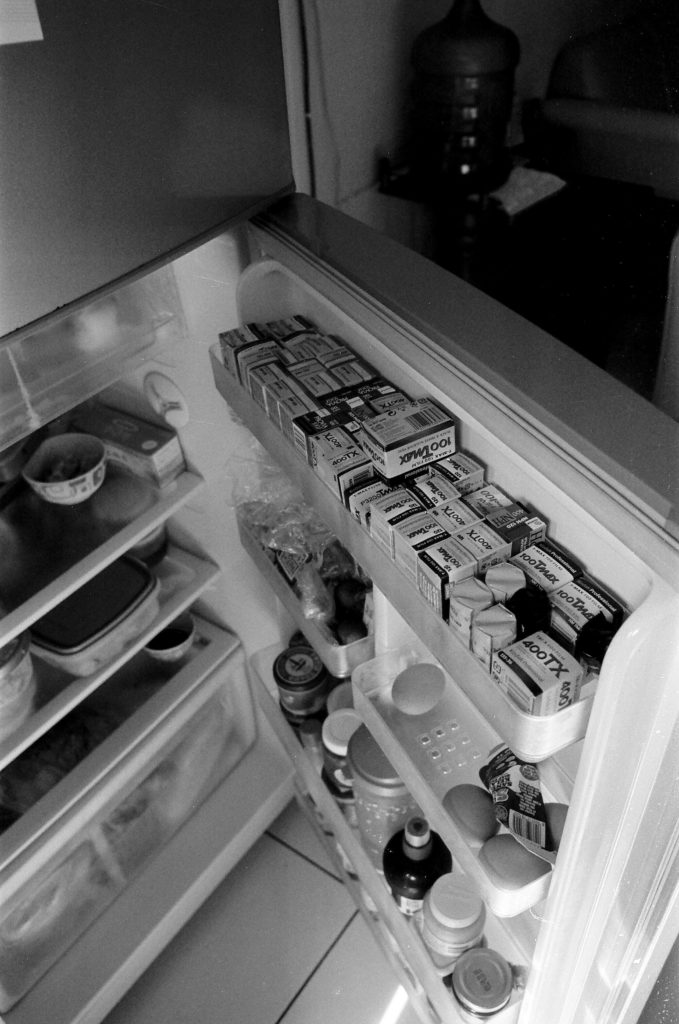All fields are required
Posted in Food Safety on April 1, 2019

Refrigeration is about as near to magic as we get in our daily lives. Think about it: without the power of a fridge or air conditioning, it’s no simple matter to make something cooler. Heating things up is relatively easy; Any caveman can make something hotter by building a fire. Getting by when the weather gets cold is largely a matter of dressing in more and warmer clothes. This dire need for a refrigerator is why a recent study was done on Refrigeration Risk Analysis.
Cooling down on a hot day is a different matter; eventually, you run out of layers to shed. Refrigerating things is similarly difficult. It took a century of prototypes and mixed success before the technology became commercially viable. By the end of the 19th century, refrigeration was a major component of the food system, allowing meat and other perishables to be transported in railcars or ships without a constant supply of ice.
As with many of our modern marvels, however, refrigeration has a downside. Yes, it keeps our food cold, allowing us to hold on to perishables for much longer than we otherwise would. It’s become so integrated into our daily lives as to be effectively invisible. All that cooling, however, soaks up a lot of power. Refrigeration accounts for 15% of total global energy consumption and about a percent of global carbon emissions. That makes it a major area for potential improvement – something that we need to do in 12 years to keep global warming to 1.5 degrees celsius, if the world’s leading climate scientists are to be believed.
A new study in Risk Analysis: An International Journal points at some methods that might be used to make the process of refrigeration more energy efficient. Eight different methods were tested and evaluated both for their impact on the amount of energy used and any effect they might have on food safety.
Two main points where improvements could potentially be made were identified: refrigerator thermostats and food display cases. Unfortunately, these changes weren’t simple decisions without downsides. The potential changes identified by the report present a mixed bag, each with upsides and downsides. There are, in other words, trade-offs involved.
Take the temperature of a refrigerator thermostat, for example. According to a write-up of the study at Perishablenews.com, decreasing the temperature of a refrigerator thermostat by a couple degrees celsius improves the shelf life of the food, reduces the growth of listeriosis, and improves the disability-adjusted life years, a measure of time lost to ill health.
Unfortunately, it also increases the amount of electricity that the fridge uses (this may seem obvious to you, but it’s important that seemingly-obvious facts are proved through controlled experiments, as sometimes things don’t work the way that we expect them to). The only way identified by the study to improve food perishability, disability-adjusted life years, food shelf life, and power efficiency was to pack more insulation on to the fridge.
That stands to reason. There are tradeoffs involved with electricity use and the other factors. You can get more out of a fridge by turning the thermostat down a couple degrees; it’ll keep food colder, and the food will accordingly keep for a longer period of time and pose less of a risk of food poisoning. If you’re making the fridge colder, however, it’s also going to use more power. Conversely, you can make a fridge slightly warmer, which will improve power performance but reduce the shelf life of the foods inside and make it slightly more likely that you’ll get sick from eating them.
There’s a similar effect going on with airflow through display cases at stores. If you turn the airflow up high, according to the study, you’ll increase the power consumption but slightly lower the risk that the food in the display case will make you sick. If you turn the airflow down low, on the other hand, the display case will use less power but be slightly more likely to make you sick.
It’s not just a bunch of tradeoffs in the study, either. The authors of the report make specific recommendations as to what to do with the information. They note that part of the problem is awareness: many people aren’t even aware of what temperature their thermostat has been set to and thus can’t make informed decisions about how they should adjust it. Their recommendation? Four degrees celsius. That’s a sweet spot that doesn’t use too much power and doesn’t allow for too much food-safety risk, according to their analysis.
They also have recommendations for display cabinets – halve the airflow. That’s right: bring it down by a full fifty percent. It’ll reduce your power usage by a third, according to the authors. But won’t it make your food more susceptible to spoilage? Not by much – by their reckoning, it’ll only increase your risk by some 2 percent.
Although the authors of the study do make concrete recommendations, this writer doesn’t think that the lesson here is that there’s optimal settings that you should seek out to balance power usage and food safety when it comes to storing and displaying your food. Instead, I think the message is that you should think about these things. Pay attention to the power settings on your fridges and display cases. Make informed decisions about whether you should turn them up or down. You have more power over little factors like these than you realize – the power to affect food safety in your home or business. And with it comes responsibility. Choose wisely!
By: Sean McNulty, Contributing Writer (Non-Lawyer)